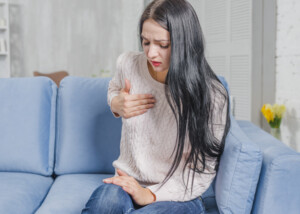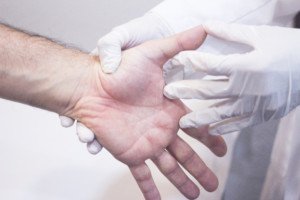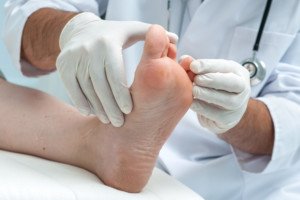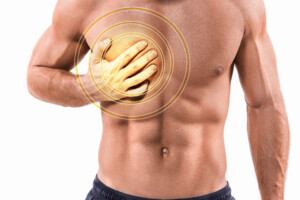Brief sharp pains or ongoing duller pain in a breast will put the fear of cancer in many women.
Inflammatory breast cancer is much more associated with pain than is the “regular kind” of breast cancer (non-inflammatory).
How often does the more typical kind of breast cancer cause pain?
“Quite rarely; most are picked up by screening imaging, as lesions would need to be quite large or located near the chest wall or armpit to cause discomfort,” says Mark Levandovsky, MD, Founder and Medical Director of Preventive Medicine and Cancer Care. Dr. Levandovsky is a board certified internist and oncologist/hematologist in practice for 20 years.
So if regular breast cancer “rarely” causes pain in a breast, this means that there are cases in which the patient experiences pain.
There are certainly women who, prior to their BC diagnosis, were having unexplained pain in the breast where the tumor was eventually found.
In inflammatory BC, the skin of the breast appears inflamed, reddish and may resemble the skin of an orange.
Pain from Non-Inflammatory Breast Cancer: Location Matters, What It Feels Like
“Pain would be a function of location,” says Dr. Levandovsky. “If closer to the armpit, it can be referred to the shoulder or arm/neck.”
If you’ve been having unexplained shoulder pain lately that is not triggered by exercise, other movement or position, and you’re due for your annual mammogram, you should schedule the mammogram.
If you’re a younger woman for whom screening mammograms are not recommended, at least have your gynecologist give you a clinical breast exam.
Various things can cause pain in the breast.
• A tight bra is one cause.
• A strained chest muscle is another.
• Sleeping on one’s side can also cause discomfort in that area.
• A pulled muscle in the back can refer pain to where it seems as though it’s originating in the breast.
These kinds of pain, with their benign causes, can range from very brief sharp sensations to a more medium level persistent pain to a dull ache.
But when breast cancer causes pain, what does this feel like?
Dr. Levandovsky says that it’s “throbbing or electricity-like (neuropathic, if [the tumor is] pushing on nerve endings). Similarly if close to the chest wall, although in that case it’d be more likely dull and deep.”
Now if the tumor is pressing on the nerve endings in the rib cage, Dr. Levandovsky says that the sensation could be that of “neuropathic (tingling) characteristics almost like shingles.
“Lesions [tumors] deep in the breast rarely cause pain, unless there’s some accidental trauma to the breast, such that bruising, dull or even sharp pain can persist longer than normally expected after an everyday bump”
“It has to do with architectural distortion of the breast (usually lesions >5cm), compromised lymphatic drainage and blood pooling.”
Speaking of getting bumped in the breast, even slugged there during a karate class, this will NOT increase the risk of cancer development.
A malignancy originates from a mutation in the DNA. Getting hit in the breast does not cause DNA to mutate.
The takeaway is that if your breasts appear normal and you do not feel any lumps, but you’ve been having pain in one lately, chances are that the cause is not related to cancer.
However, to play safe, you should have a doctor perform a clinical exam.

Dr. Levandovsky provides personalized care to health conscious individuals as well as cancer patients and survivors, focusing on an integration of genetic/molecular risk assessments, prevention, education, nutrition and psycho-oncology.
 Lorra Garrick has been covering medical, fitness and cybersecurity topics for many years, having written thousands of articles for print magazines and websites, including as a ghostwriter. She’s also a former ACE-certified personal trainer.
Lorra Garrick has been covering medical, fitness and cybersecurity topics for many years, having written thousands of articles for print magazines and websites, including as a ghostwriter. She’s also a former ACE-certified personal trainer.
.















